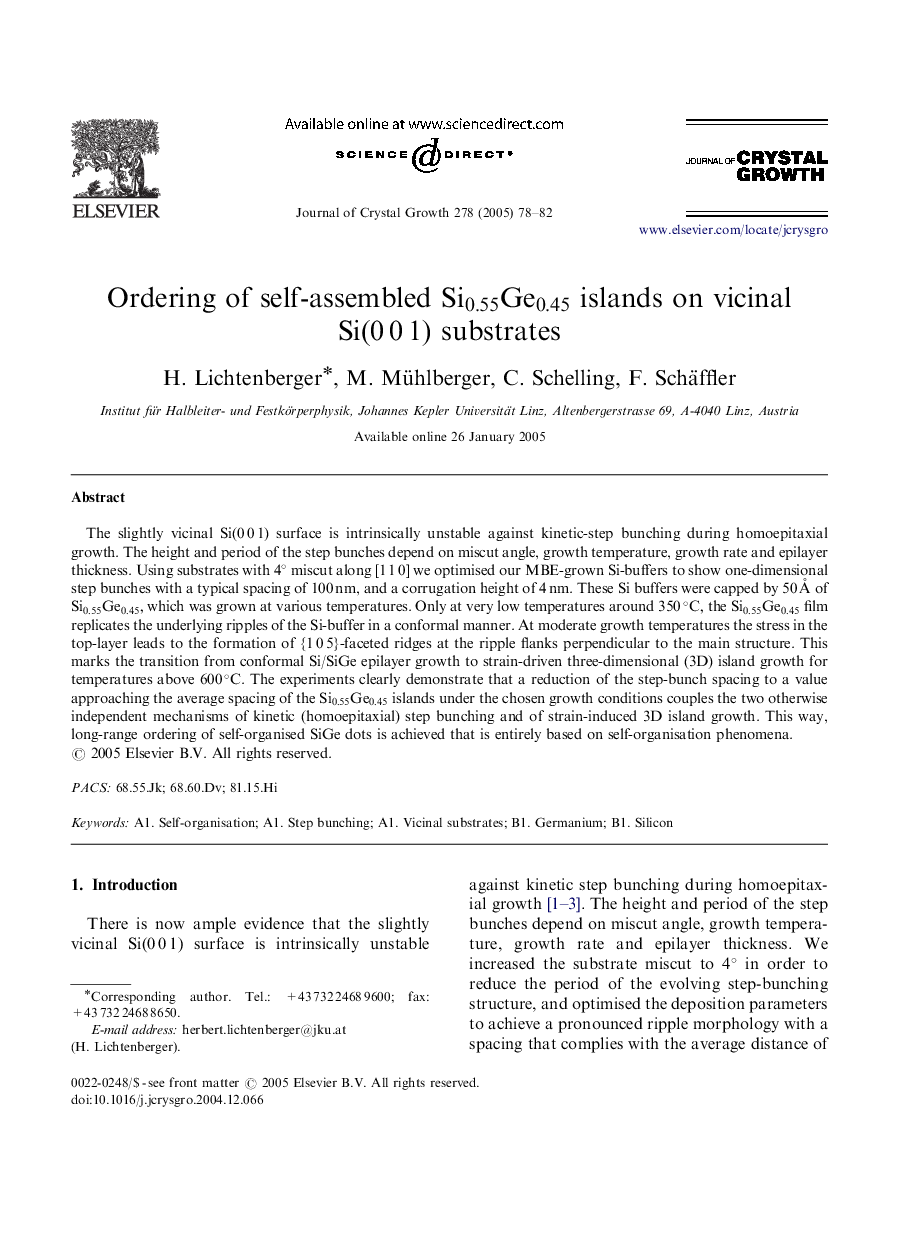| Article ID | Journal | Published Year | Pages | File Type |
|---|---|---|---|---|
| 9829790 | Journal of Crystal Growth | 2005 | 5 Pages |
Abstract
The slightly vicinal Si(0Â 0Â 1) surface is intrinsically unstable against kinetic-step bunching during homoepitaxial growth. The height and period of the step bunches depend on miscut angle, growth temperature, growth rate and epilayer thickness. Using substrates with 4â miscut along [1Â 1Â 0] we optimised our MBE-grown Si-buffers to show one-dimensional step bunches with a typical spacing of 100Â nm, and a corrugation height of 4Â nm. These Si buffers were capped by 50Â Ã
of Si0.55Ge0.45, which was grown at various temperatures. Only at very low temperatures around 350Â âC, the Si0.55Ge0.45 film replicates the underlying ripples of the Si-buffer in a conformal manner. At moderate growth temperatures the stress in the top-layer leads to the formation of {1Â 0Â 5}-faceted ridges at the ripple flanks perpendicular to the main structure. This marks the transition from conformal Si/SiGe epilayer growth to strain-driven three-dimensional (3D) island growth for temperatures above 600Â âC. The experiments clearly demonstrate that a reduction of the step-bunch spacing to a value approaching the average spacing of the Si0.55Ge0.45 islands under the chosen growth conditions couples the two otherwise independent mechanisms of kinetic (homoepitaxial) step bunching and of strain-induced 3D island growth. This way, long-range ordering of self-organised SiGe dots is achieved that is entirely based on self-organisation phenomena.
Related Topics
Physical Sciences and Engineering
Physics and Astronomy
Condensed Matter Physics
Authors
H. Lichtenberger, M. Mühlberger, C. Schelling, F. Schäffler,
